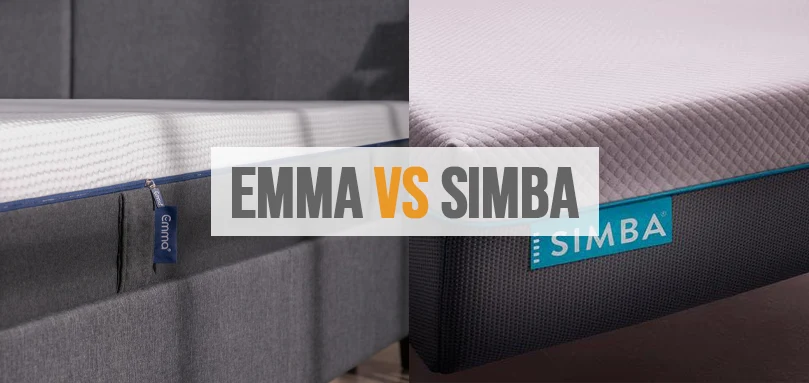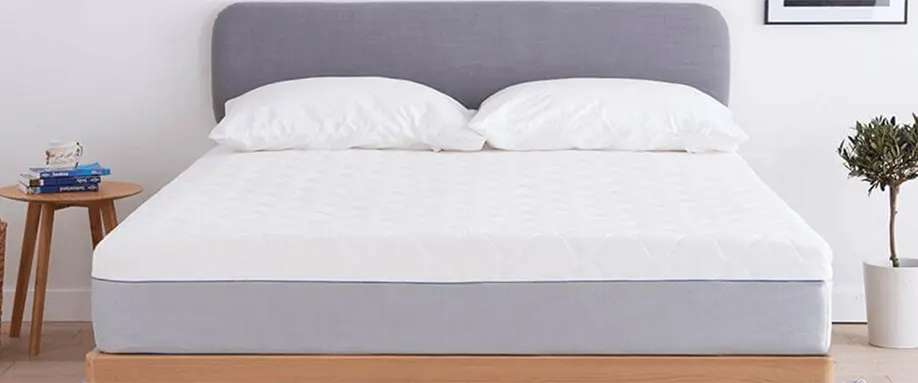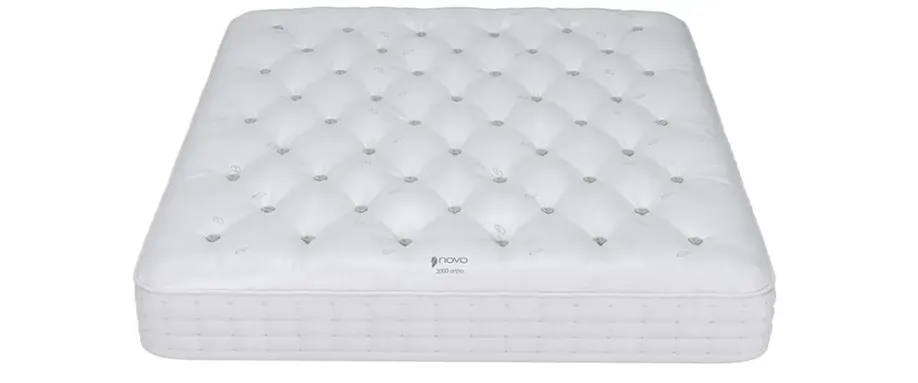Emma Hybrid VS Simba Hybrid comparison table
|
Mattress |
Emma Hybrid |
Simba Hybrid |
|
Type |
Hybrid |
Hybrid |
|
Height |
25 cm |
25 cm |
|
Number of layers |
4 |
5 |
|
Firmness |
7 |
6.5 |
|
Support |
8 |
9 |
|
Good for |
Back and side sleepers |
All sleeping positions |
|
Temperature regulation |
7 |
7.5 |
|
Motion isolation |
10 |
9 |
|
Cover |
99% polyester, 1% elastane |
100% polyester |
Overall Comfort
Comfort is arguably the hardest characteristic to quantify and compare because not everyone will find the same thing comfortable. However, some of these high-quality mattresses are just objectively comfortable, which is the case for these two.
Emma Hybrid is a crowd favourite because most sleepers prefer the soft comfort of memory foam alongside support from micro coils. Seeing how Emma Hybrid is tailored towards side and back sleepers, we can safely say that they're the ones finding Emma Hybrid slightly more comfortable. Also, once you factor in the 3-zoned base and the tailored support that the Hybrid offers, it's hard to make a case against this mattress.

Simba Hybrid, on the other hand, is a bit softer, but still a comfortable mattress. It's not a lot softer, since Simba Hybrid is also 90% memory foam. Even though it is softer, you still get a bit more support and firmness around the hips. That makes it a bit more of an all-around player, as stomach sleepers can also enjoy this one. Once again, the entire mattress is supported by a multi-zone base layer, so side and back sleepers will also find comfort in this one.
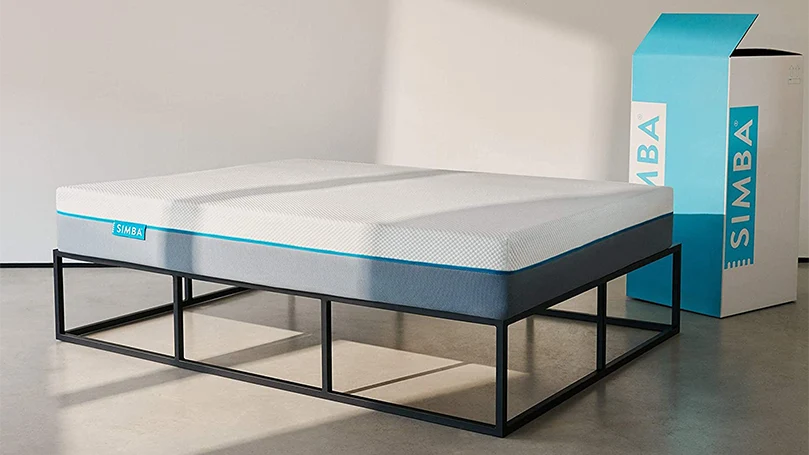
We're inclined to call this a tie since both of these are remarkably comfortable. However, since Simba Hybrid is a bit more well-rounded, we'll give it a slight edge.
Nine and a half out of ten for Simba, and a solid nine for Emma Hybrid.
Support
People are often led to believe that memory foam is all about comfort and softness, and they often overlook the support side of things. However, we're not most people.
Emma Hybrid, due to its HRX memory foam base, is one of the most supportive memory foam/pocket spring mattresses on the UK market. We've already mentioned three-zone support, so you already know that it offers quite a lot of comfort around the pressure points and core areas, but what we didn't mention is that HRX foam is high-density foam or up to 2,000 steel micro coils, so you can expect a great deal of support out of this Emma mattress.
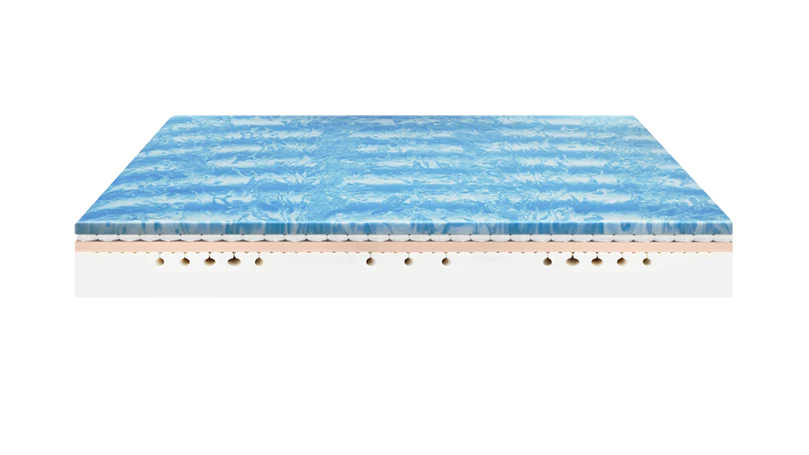
Simba Hybrid mattress also comes with a zoned support layer, so it would be safe to assume that it is on par with Emma Hybrid. Simba Hybrid mattress also comes with up to 2,500 2.5 cm tall titanium pocket springs. Those super-durable and super-responsive springs and zoned base give it a slight edge over Emma, especially around the hips, making Simba a preferred option for stomach sleepers.
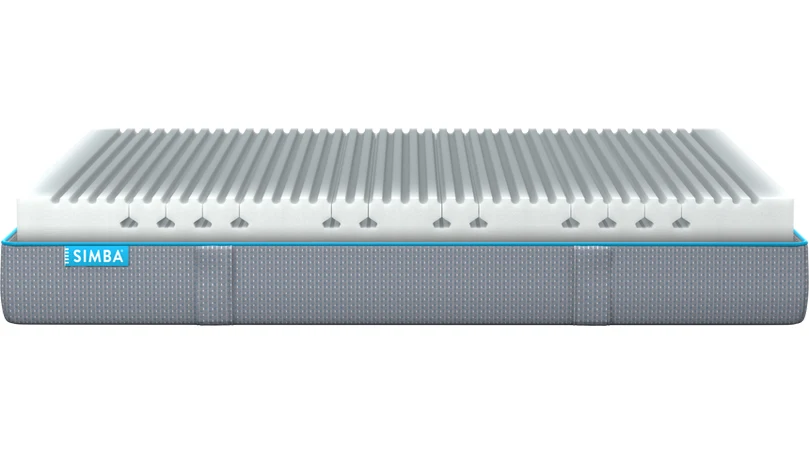
Also, Emma struggles a bit with support around the edges, which is surprising given how similar it is to the award-winning Emma Original mattress.
Overall, an eight out of ten for Emma, but a strong nine for the Hybrid Simba mattress.
Temperature regulation
Emma mattresses aren't really known for being the most breathable, but what could you expect from an almost all-foam mattress? However, compared to some other similar mattresses, Emma Hybrid is actually quite breathable. This is due to its layer of Airgocell foam. This open-pored layer is designed to wick away heat and moisture and dissipate it out in the air, instead of sending it back to you. Naturally, there's only so much you can expect from memory foam, so if the summers get really toasty – you might want to consider adding a cooling topper.
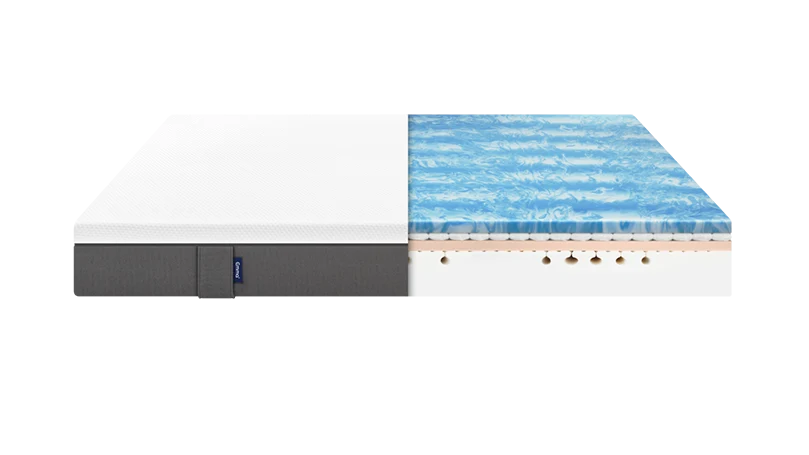
Simba Hybrid mattress is also mostly made out of foam, but thanks to their open-cell foam called Simbatex and the 25 mm tall springs – it does a pretty decent job regulating temperature. The Simbatex layer is not just open-cell, but it's also infused with graphite, which helps tremendously. The graphite-infused layer absorbs all the extra heat, and then just lets it out underneath where the micro coils are.
Once again, Simba Hybrid mattress takes the win. However, only by a tight margin.
Seven and a half for Simba, and a seven for Emma.
Overall stability
Stability is another factor that's often overlooked when we discuss mattresses – but not today. To assess overall stability, we'll look at responsiveness, motion isolation, and edge support.
Emma Hybrid mattress excels at two out of three. Seeing how it is a hybrid mattress, Emma Hybrid is as responsive as it gets. It offers just enough bounce so that you don't ever feel like you're “trapped” when lying down. As for motion isolation – we truly think it doesn't get much better than this. You could place a glass of water onto one side of the bed, throw a dumbbell at the other and not spill a drop. It's that good. However, edge support is lacking with Emma Hybrid. It's not that it's not good, but it could certainly be better.
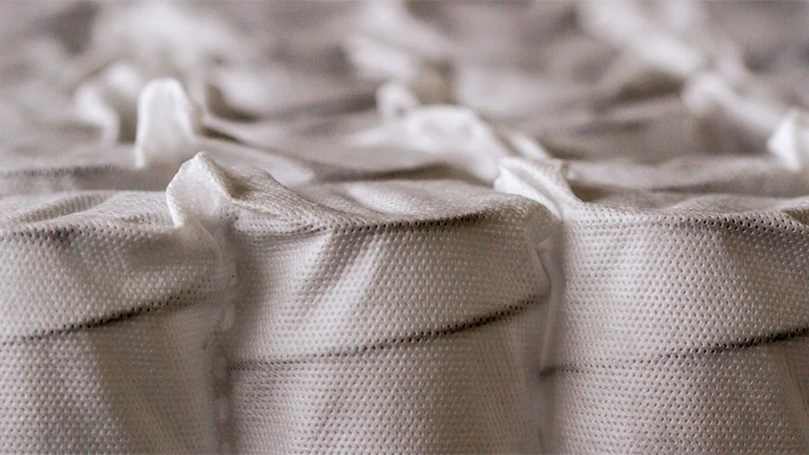
Simba Hybrid, however, does all of these things perfectly – or at least as close to perfect as you could get. You will get a bit more bounce than with Emma, thanks to the titanium Aerocoils, but what's interesting about it is that additional bounce won't come at the expense of motion transfer isolation with this Simba mattress. And, thanks to the edge-to-edge layer, support around the edges is flawless.
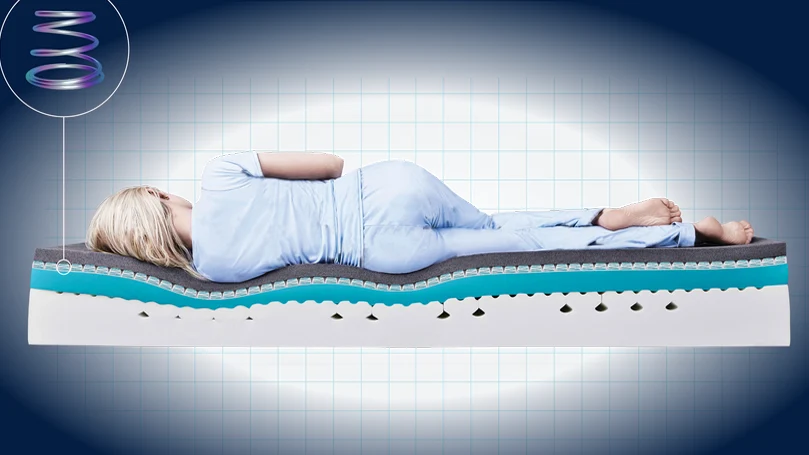
Overall, we'd say that Emma Hybrid is a tiny bit better at isolating motion than Simba, but considering its average-ish edge support, we have to give another round to Simba.
A perfect ten for Simba, and an eight and a half for Emma.
Structure
As for the structure, these mattresses are very similar. However, they're made by different mattress brands, so there are bound to be some differences between the two.
Emma Hybrid starts with a cold foam base called HRX foam. It is a three-zone base, specially designed to provide support, enhance spinal alignment, and improve weight distribution and pressure relief. It is a similar base to the one used in their renowned memory foam mattress – Emma Original.
On top of the cold foam base, we can find a layer of pressure-relieving visco-elastic memory foam. As you can probably tell by the name, this layer is designed to provide pressure relief and reduce motion transfer.
Next up, we have up to 2,000 steel micro coils. These coils help improve several things – comfort, contouring, pressure relief, air flow, and overall stability.
Finally, on top, we have a comfort/breathability layer called Airgocell memory foam. Airgocell technology is one of Emma's most proud innovations. It's contouring, pressure-relieving, temperature-regulating and motion-isolating – all at once.
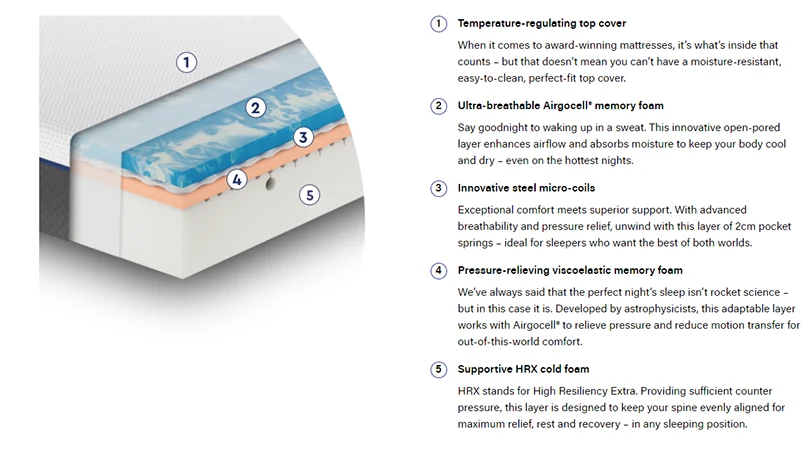
Simba mattress also sports a support foam base, but unlike Emma's – this one has five unique zones. This one's a bit firmer under the hips, making it suitable for all sleeping positions, which is common for Simba mattresses.
On top of the base, we can find an edge-to-edge support memory foam layer, ensuring that the springs are evenly supported all throughout the mattress, but also making sure that the edge support is not lacking.
25 mm tall titanium Aerocoil springs lay on top of the edge-to-edge support layer, and on top of the springs, we can find the fourth, and final layer of Simba Hybrid, the Simbatex, open-cell graphite-infused temperature-regulating layer.
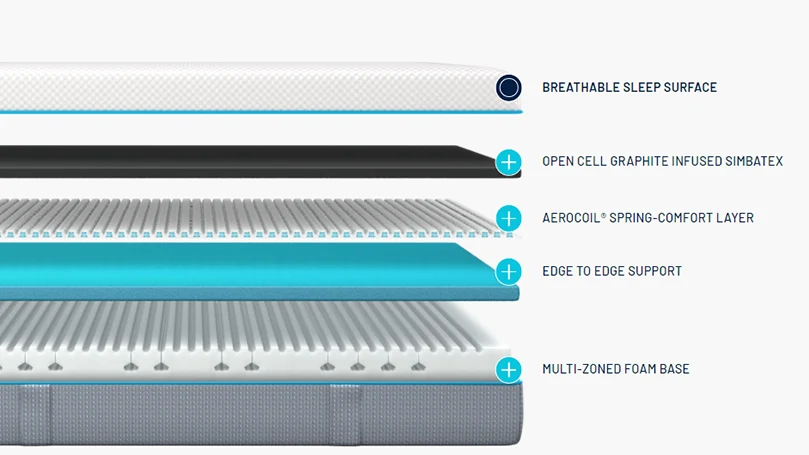
Sizes
Both of these are available in all the standard sizes, but as you're about to see, we do have a clear winner here.
Both Emma Hybrid and Simba Hybrid are available in all the UK standard sizes:
- Single (90 x 190 cm)
- Small Double (120 x 190 cm)
- Double (135 x 190 cm)
- King (150 x 200 cm)
- Super King (180 x 200).
However, Simba takes sizing options quite a bit further, offering the following:
- Kids (90 x 190 x 16 cm)
- EU Single (90 x 200 cm)
- EU Double (140 x 200 cm)
- EU Queen (160 x 200 cm).
As for the depth of these two, both of them are 25 cm tall, which is widely considered to be the perfect mattress depth. So, whether you get a Single or a Super king – mattress depth will stay the same.
The only exception is the Kids size of Simba Hybrid mattress, which is 16 cm deep.
Delivery & trial
Even though these two mattresses come from different companies – delivery, trial, and warranty conditions are identical across the board.
When you order your new vacuum-packed mattress, whether it's an Emma mattress or a Simba mattress, you can expect to receive it in one to three business days. Naturally, this only applies to the UK mainland.
What also applies to the UK mainland is the free delivery. Both mattresses are void of all delivery and shipping charges.
The trial period for both these mattresses is also the same – 200 nights. You will get to spend over six months with each of these, and if you happen not to like them, you can return them for a full refund, completely free of charge.
Finally, you will get a 10-year warranty for both of these.
What are the 7 key differences between Emma Hybrid & Simba Hybrid?
Now that we're done with Emma Hybrid and Simba Hybrid mattress comparison, we're going to highlight some of the key differences between these two. Understanding these differences will help you easily identify which one of these is a better option for you.
1. Simba is softer while Emma offers more firmness
One of the hardest differences to spot between these two has to be firmness.
There's about a 5 to 10% difference in firmness between these two, with Emma Hybrid being the firmer of the bunch. This small difference in firmness between these two is actually quite unique. Even though Emma's a bit firmer, Simba is actually the one that's better suited for all sleeping positions thanks to differently tailored, zoned support.
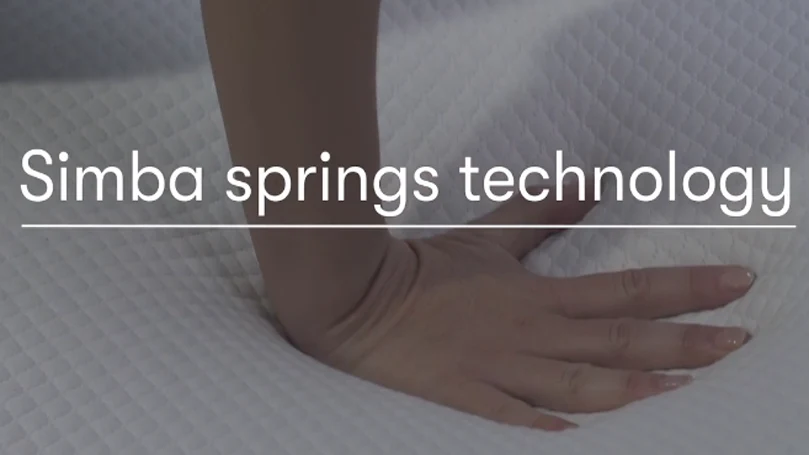
Thanks to that little bit of extra overall firmness, Emma Hybrid is rated higher in terms of how much weight it can support. Emma can withstand up to 130 kg per person, while Simba is rated at 114 kg, so heavyweight sleepers will prefer the Emma more.
2. Emma is aimed at side and back sleepers, while Simba offers more comfort to front sleepers
Most people would probably guess wrong about which mattress to choose if they were only looking at firmness. However, that only goes to show that firmness is not the main determining factor when choosing a mattress.
Generally speaking, Emma Hybrid is a perfect mattress for side and back sleepers. It's a medium-firm hybrid mattress, and as such, it is just what side and back sleepers need. It will provide comfort, pressure relief, and enough room for your hips and shoulders to sink right into the mattress, keeping your spine perfectly aligned all throughout the night. If you want a more all-around mattress from Emma, you'd go with something like Emma Premium mattress.
Simba Hybrid, on the other hand, is something stomach sleepers could enjoy, too. Just to be clear, Emma Hybrid is not uncomfortable for stomach sleepers – it's just that Simba's better. Due to a bit of extra firmness around the core areas, Simba Hybrid offers solid support underneath the hips, allowing the stomach sleepers to get a good night's sleep.
However, both of these are “soft” mattresses for heavyweight sleepers that prefer sleeping on their stomachs, so keep that in mind.
3. Simba offers better cooling abilities than Emma
As we have already discussed, another difference between the two is temperature regulation. The difference isn't too obvious like it would be if we were to compare either of these to all-foam mattresses, but it's still there.
Even though both of these have several memory foam layers, including a high-definition foam base, only one of these has a graphite-infused foam layer that makes a significant difference in cooling and breathability.
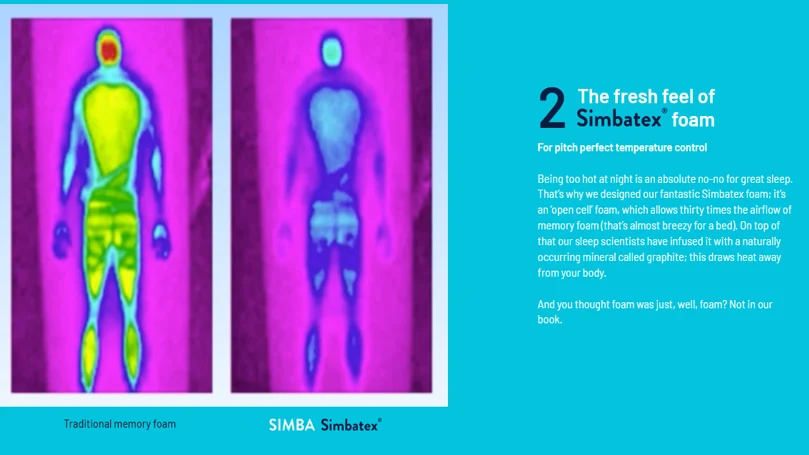
Simba is known for its remarkable passive and active cooling technologies, and even though we don't see Simba Stratos active cooling technology with this one, Simbatex does more than a good job keeping things cool and breezy.
Now, if we're being completely honest, both of these will be more than suitable for UK summers. Since the temperature in the UK rarely eclipses 30 degrees Celsius, neither of these two should cause you any trouble sleeping.
With that being said, Simba Hybrid does do a slightly better job at keeping things cool, which is something to keep in mind if you live somewhere a bit sunnier.
4. Emma has a three-zone foam base, while Simba has a five-zoned base
Either one of these is a good quality mattress, so what does this minor difference in base mean for an average customer? Well, quite a lot actually.
A zoned base can make a world of difference for a mattress, which is why you often see memory foam mattresses experiment with their base support layers. In this case, we have two high-definition, high-density foam bases.
Structurally, they're probably quite similar, however, they're zoned differently. As we have already mentioned, the difference between these two lies in the level of support around the hips, but does this difference affect anything else?
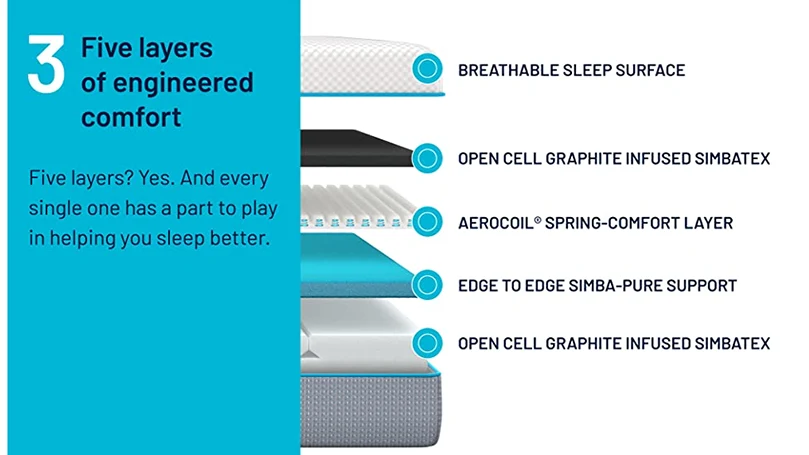
Well, an all-foam mattress base absorbs energy, movement energy, ensuring that there is not a lot of motion transfer. What it also does is offer better contouring and pressure relief. And, since both of these are fairly strong in both these categories, one would assume that zoning didn't make any difference in those areas – but it actually does.
For instance, while you would get more support around the hips with Simba, you would actually get more pressure and pain relief from Emma, as the zoning cut-outs are done differently.
5. Simba mattress works well with all bed bases, while Emma struggles a bit with a slatted base
We have already talked about the structure of these two, and even though they are fairly similar, Emma Hybrid turns kind of soft when used on a slatted base, which is not the case with Simba's hybrid.
Obviously, every mattress, whether it's a new mattress or an old one will feel slightly different when placed on a slatted base, but with Emma Hybrid, the difference is too great.
It's not heaven and earth, obviously, but out of all the mattresses that we've ever tested and reviewed, the difference with Emma Hybrid seems to be the most obvious one.
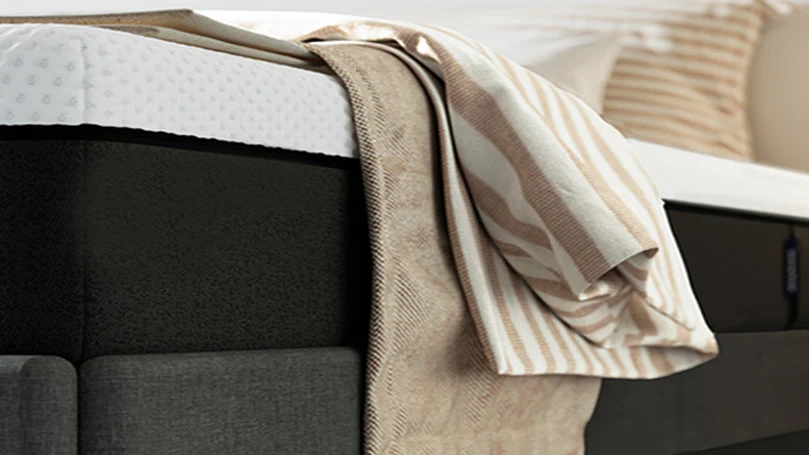
The most noticeable difference when you place this one on a slatted base is that it becomes 10-15% softer. At that point, front sleeping becomes kind of uncomfortable for most men. Children, teenagers, and most women could probably get by, but if you're over 65-70 kilos, expect your hips to sink quite a bit deeper than usual, resulting in some lower back pain.
Usually, Emma Hybrid is brilliant at alleviating lower back pain, so you can see how this could be an issue for some.
6. Emma mattress comes with a removable cover, while the Simba does not
Another difference between the two lies in the covers.
Emma Hybrid comes with a removable, machine-washable cover, which is to be expected from a top-selling, high-quality medium-range mattress. Simba Hybrid, on the other hand, does not.
Simba Hybrid's sleep surface is a 100% polyester, non-removable cover, only washable with a damp cloth and a vacuum.
For many, that is a major disadvantage, as many prefer to keep their mattresses clean and allergen-free.
Thankfully, both of these covers are hypoallergenic, but still, that doesn't mean that we wouldn't have loved to just strip our Simba Hybrid mattress and toss the cover in a washing machine at 40 degrees, which is exactly what you can do with Emma Hybrid's cover.
7. Simba offers slightly more durability than Emma
The final difference between the two might not be evident for quite a long time, seeing how both of these are excellent mattresses.
As we have mentioned earlier, both of these are covered by a 10-year warranty, and that's just about how long these will last with proper care and maintenance. However, Simba Sleep has built a reputation for manufacturing unbelievably durable mattresses, and that's also the case with their Hybrid.

Now, we can't really speak in exact numbers, because the longevity and durability of the mattress depend on a lot of factors, but if you could somehow put these two, side by side, and use them in the exact same manner for years to come, we'd expect Simba Hybrid to outlast Emma Hybrid.
Advantages & disadvantages of Emma Hybrid

Now, let's take a look at a brief overview of all the advantages and disadvantages of the Emma Hybrid mattress.
Advantages



Disadvantages


Advantages & disadvantages of Simba Hybrid
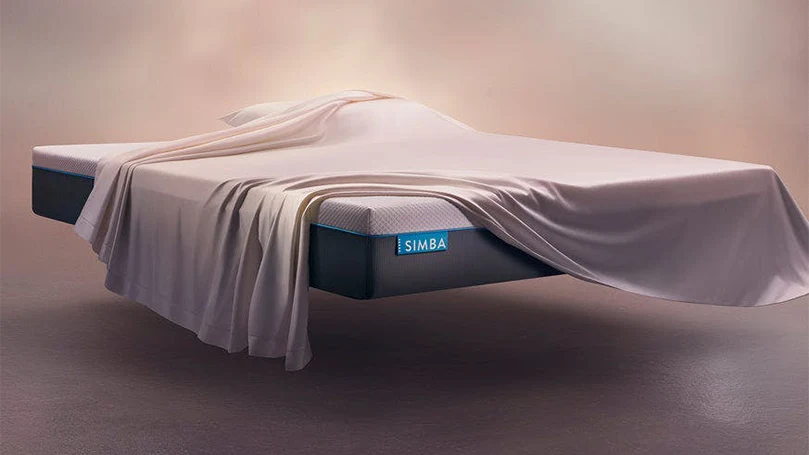
Now, let's take a look at a brief overview of all the advantages and disadvantages of Simba Hybrid mattress.
Advantages



Disadvantages



Emma Hybrid is best suited for…
If your preferred sleeping position is side or back – Emma Hybrid is for you. But, that's not all that matters.
Emma Hybrid is also quite a pick for people struggling with back or joint pain. With this level of pain and pressure relief, it's hard not to recommend this one to an aching sleeper.
On that note, Emma Hybrid is best suited for…
- Back and side sleepers
- Lightweight stomach sleepers
- Couples and restless sleepers
- Sleepers that struggle with lower back, hip, and leg pain
- Sleepers that suffer from allergies.
Simba Hybrid is best suited for…
Simba Hybrid is a slightly firmer mattress compared to Emma Hybrid and as such, it is a better option for stomach sleepers. Of course, the Hybrid is a well-rounded mattress, so unless you're quite heavy, your sleeping preference doesn't really matter with this one – it'll be good either way.
On that note, Simba Hybrid is best suited for…
- All sleeping positions
- Sleepers that struggle with back pain
- Sleepers that suffer from allergies
- Couples and restless sleepers
- Sleepers looking for an extra durable mattress.
Spread the word
FAQs about Emma Hybrid vs Simba Hybrid
Now that we're done comparing these two – let's answer some FAQs.
Emma Hybrid is a slightly firmer medium-firm mattress out of the two.
While both are very durable and long-lasting, Simba Hybrid is a bit more durable.
No. Only the Emma Hybrid comes with a removable, machine-washable, moisture-wicking cover.
Simba Hybrid can be vacuumed, and spot cleaned, while you can remove the cover from Emma Hybrid and wash it in a washing machine at 40°C.
Both of these are bed-in-a-box mattresses. Therefore, yes, both of them will arrive vacuum sealed and rolled up.
Yes. Either one of these is a great mattress for side sleepers.
Back sleepers could choose either one of these, while the front sleepers are somewhat better off choosing the Simba Hybrid.


